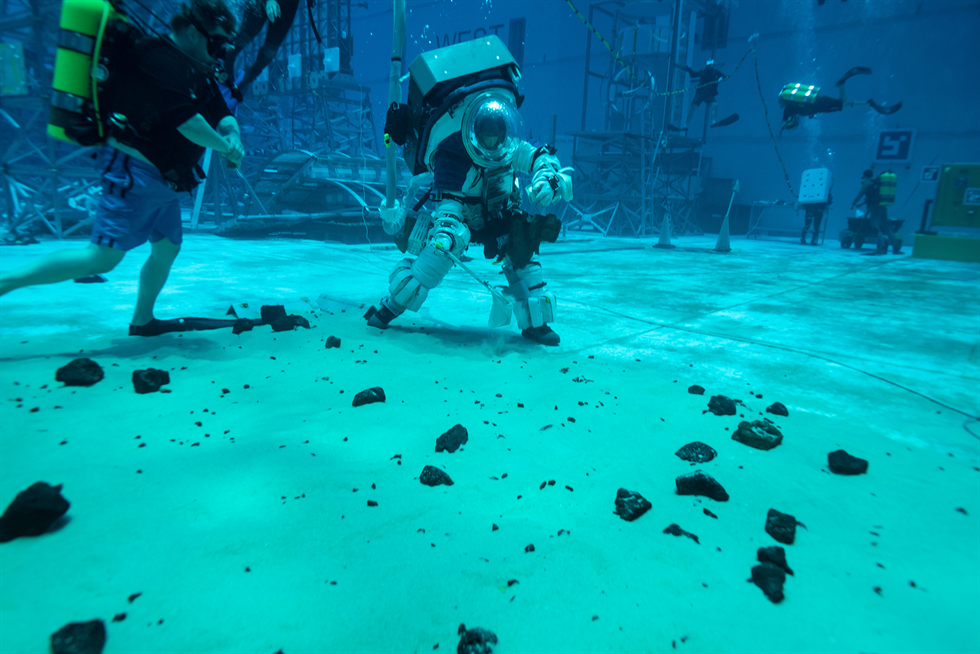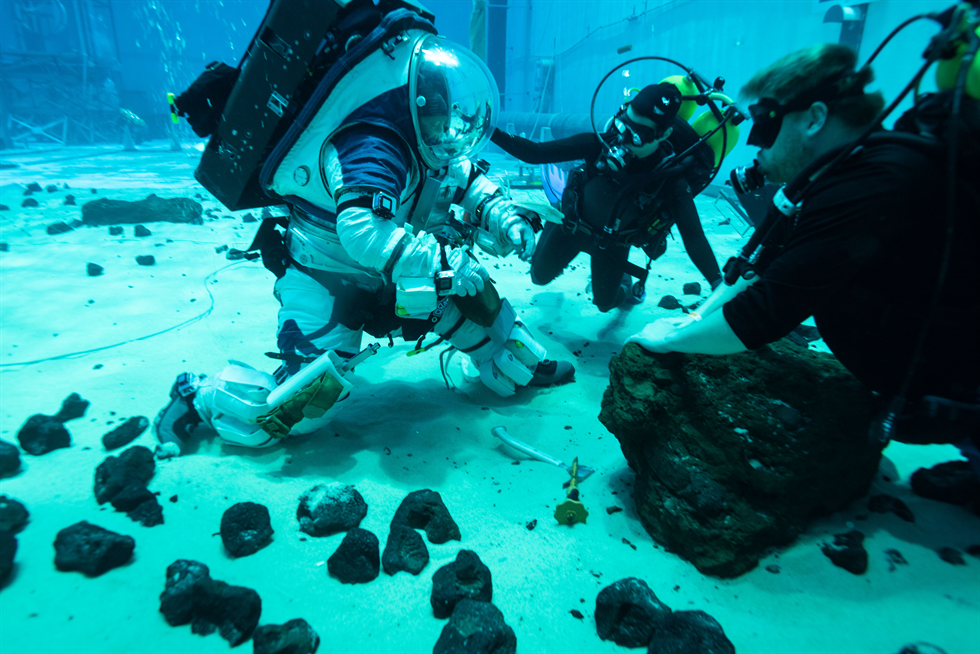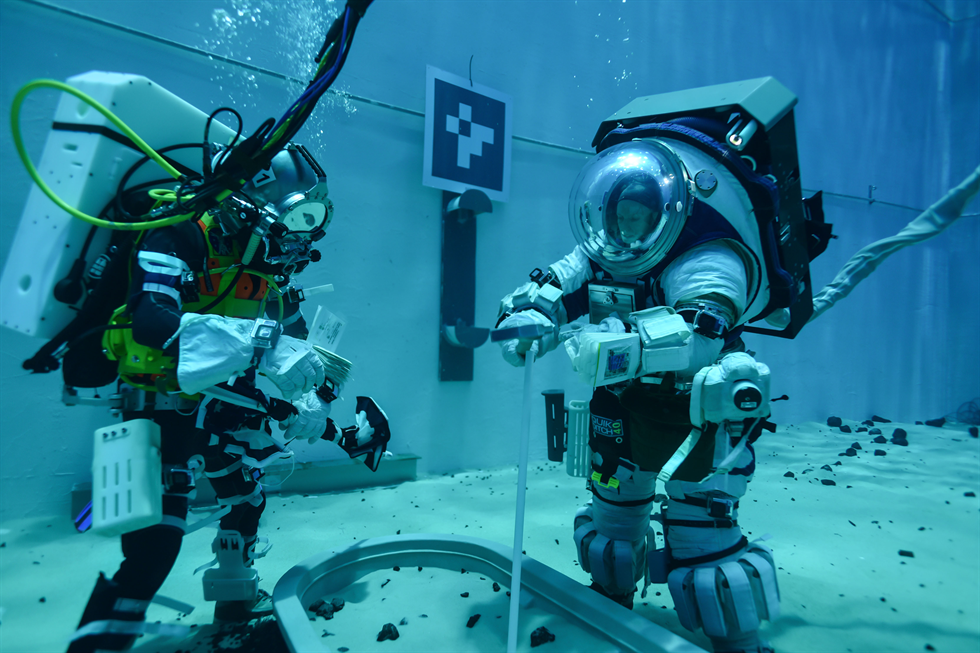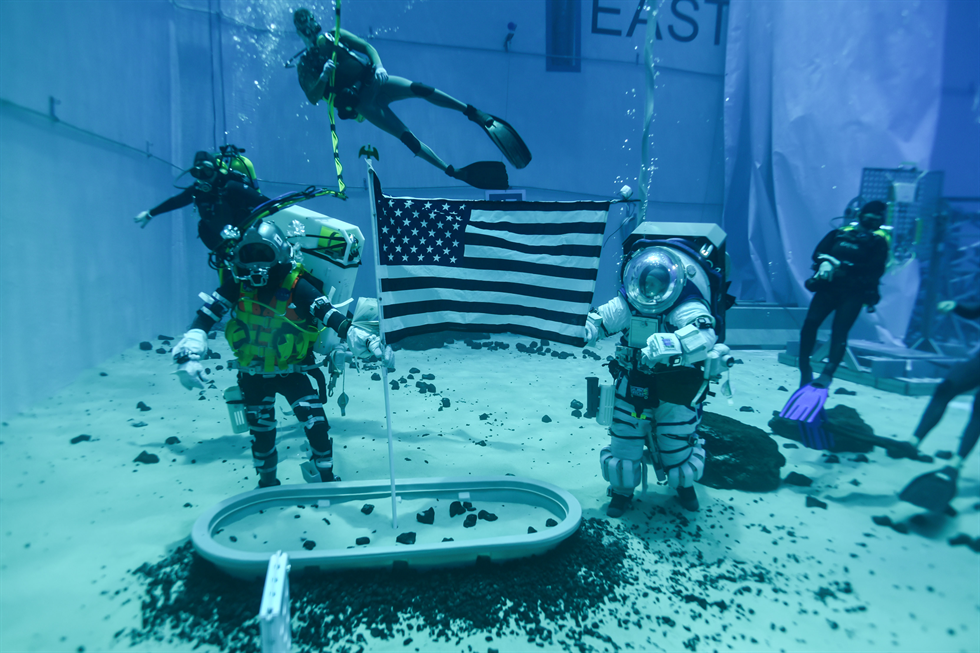JSC’s Preparations for the Next Moon Walk are Underway (Underwater)
NASA’s Johnson Space Center (JSC) is continuing its legacy as the home of human spaceflight as the agency begins testing tools and developing training approaches for surface operations when the first woman and the next man walk on the Moon during Artemis missions.
A test series recently began in the Neutral Buoyancy Lab (NBL) with both astronauts and engineers in the Z2 precursor to the exploration spacesuit and in “hard hat” dive equipment where they simulate several different tasks crew will do on the surface of the Moon. The series, which is a collaborative effort between several groups in the Flight Operations Directorate (FOD), the Extra Vehicular Activity (EVA) office, the Engineering directorate, and the Human Health and Performance directorate, is focused on evaluating Johnson’s facilities for Artemis EVA testing, development, and crew training.
“This early testing will help determine the best complement of facilities for hardware development and training leading up to Artemis missions,” said Daren Welsh, EVA Test Lead for these Artemis test runs. “But at the same time we are going to be able to gather valuable feedback on EVA tools and operations products that will help inform some of the objectives for the missions.”
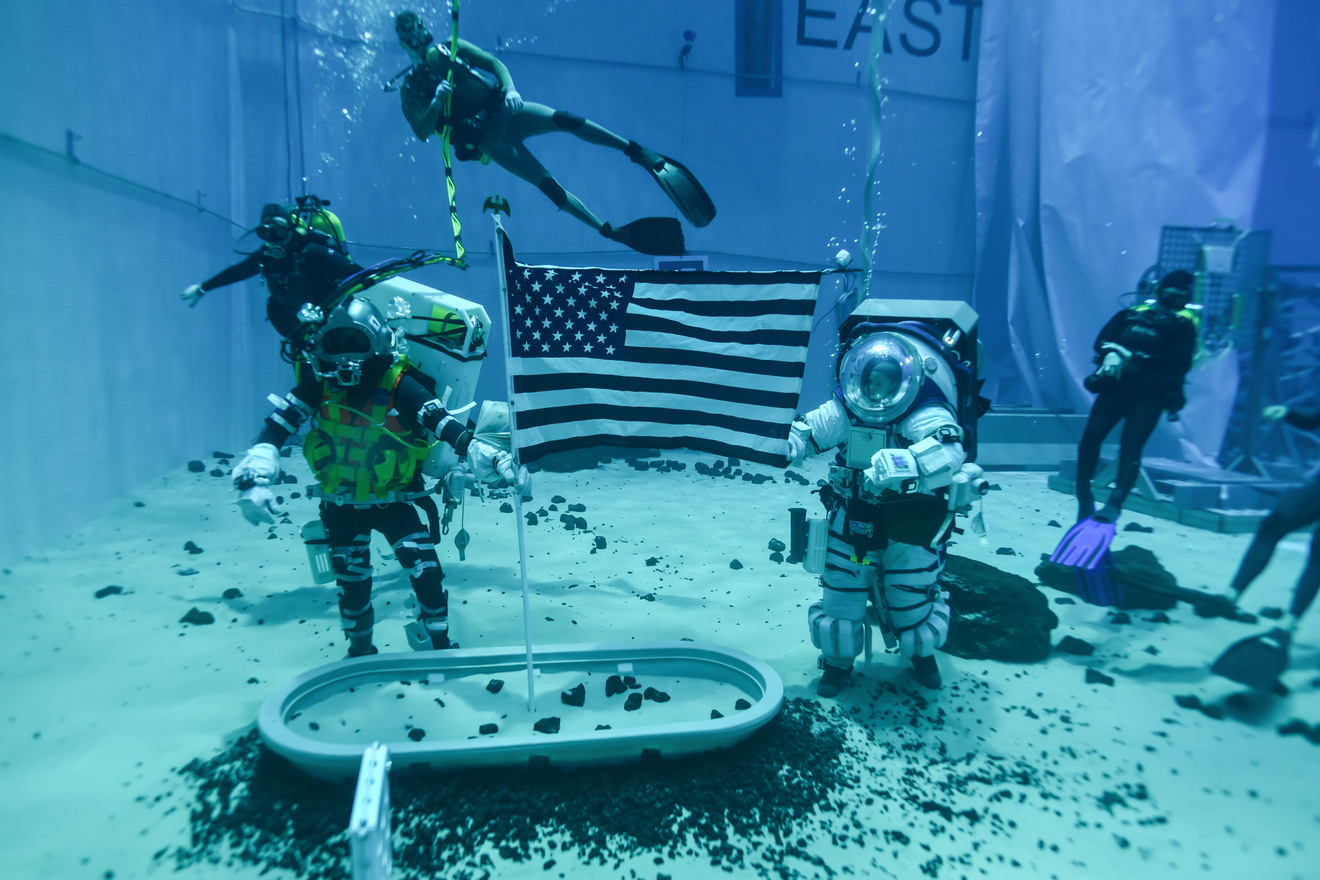
This marks a new and exciting challenge for the NASA team to develop an entirely new EVA training flow after spending the past two decades preparing astronauts for EVAs to accomplish the monumental task of construction and maintenance of the International Space Station over the past 20 years.
“We have experience with ISS, but we need to determine how we’re going to train the crew for surface operations during these specific missions,” Welsh said. “There is a lot of work to do to get the facilities ready to work in lunar gravity and figure out how to facilitate the training.”
While the initial test of this series was performed in conditions that mimicked lunar gravity in the NBL, to develop a diverse test flow the series will use analog locations, such as the JSC Rock Yard, to identify the complement of training activities and locations that will provide a comprehensive environment to prepare Artemis astronauts for their missions.
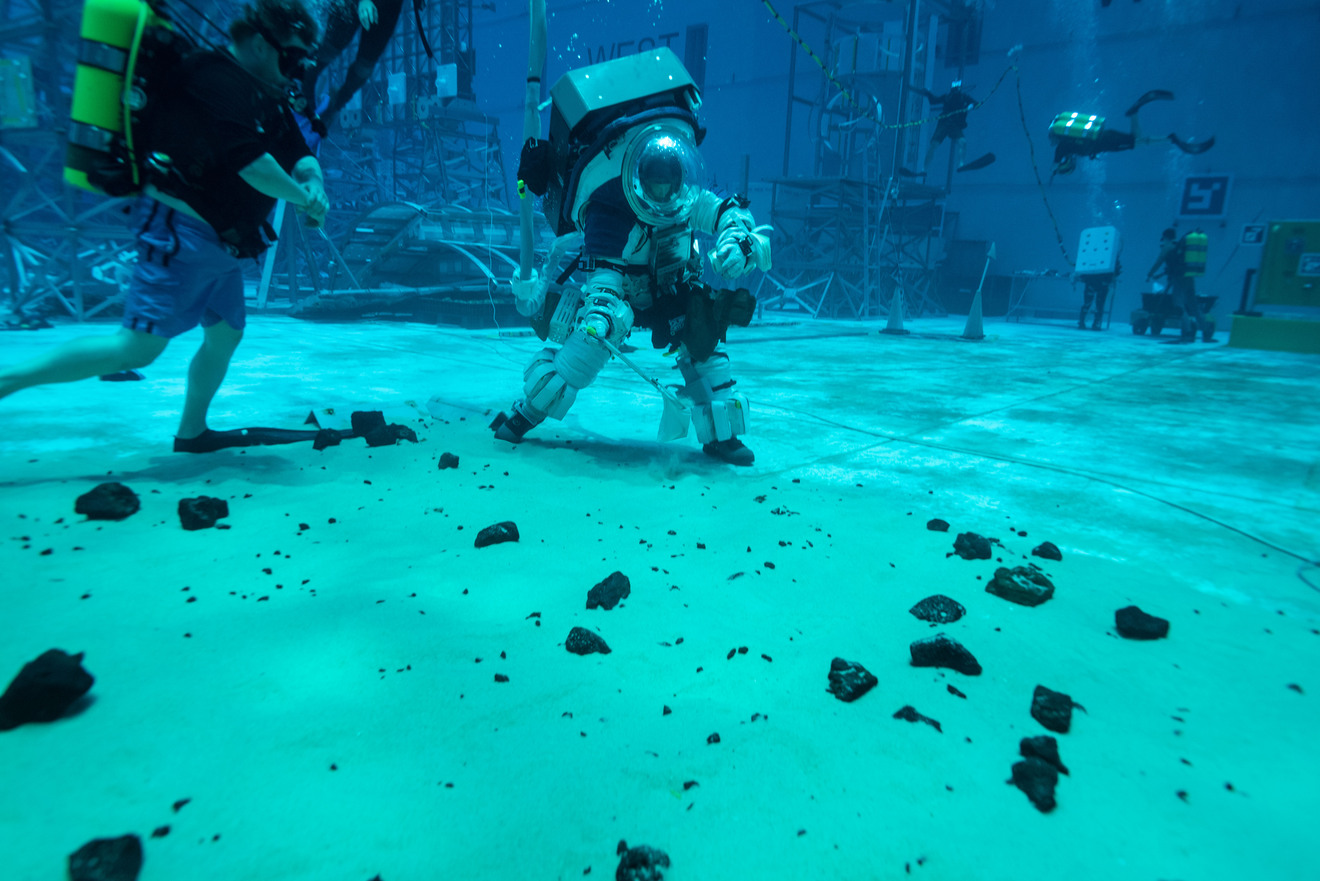
The first NBL test as part of this series, which took place in August, marked an important step for NASA as it was the first mission timeline gravity-offloaded suited testing for human surface operations on another planetary body since Apollo 17 in 1972. During this test, the EVA team experimented with operating different tools, inspecting a mock human lander, and collecting samples to get a feel for how the spacesuit will function in a lunar gravity environment.
“We can evaluate tools in a lab or the rock yard, but you can learn so much when you put a pressurized spacesuit on and have to work within the limitations of its mobility,” Welsh said. “These NBL runs are so valuable for understanding the human performance component and ensuring our astronauts are as safe as possible.”
This collaborative effort is already paying dividends for the team as they are becoming more familiar with the surface operation concepts. As the tests continue, the team is expanding the scope of the testing, with plans to complete full lunar EVA timelines, including egress from a mock lander, geological sampling, and even planting an American Flag.
When the next NASA astronauts walk on the Moon, the team at JSC will be able to look up and know that the work being done today made it possible.
DARE. UNITE. EXPLORE.
This testing is a great example of the JSC vision of Dare. Unite. Explore. As we Dare to send astronauts on challenging missions to the Moon and beyond, we must Unite as a workforce, across directorates and centers, to prepare our brave astronauts to Explore the universe.
